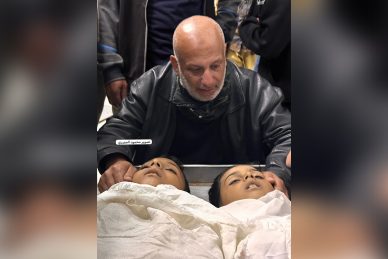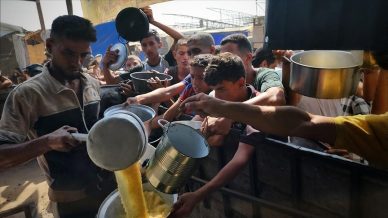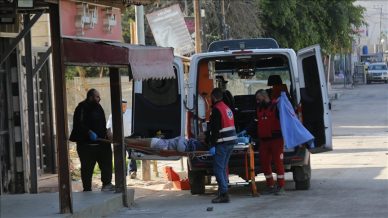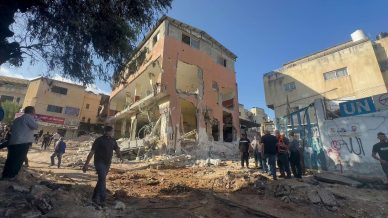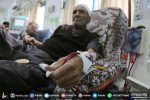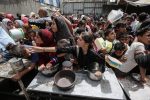TYRE, (PIC)
The Israeli forces continue their aggression and terror, from the Gaza Strip to Lebanon, issuing orders for forced evacuations that include the Rashidiya refugee camp near Tyre. This decision has been met with widespread rejection from the camp’s residents.
The Israeli army issued on Thursday evacuation orders for villages and towns in southern Lebanon, notably the Rashidiya refugee camp, which is the first camp to receive such orders for forced relocation, in addition to other villages in the region.
The Arabic language spokesman of the Israeli army, Avichay Adraee, claimed via X platform that these areas are witnessing activities by Hezbollah; a statement denied by the camp’s residents, who confirmed that the camp is an isolated area inhabited solely by Palestinian civilians.
Resilient despite evacuation orders
Our reporter confirmed that the forced evacuation decision has created a state of tension and panic among the camp’s residents. However, a significant number of them have decided to remain in the camp after enduring the hardships of repeated displacement and the associated harsh conditions.
According to local sources, 3,000 Palestinians in the Rashidiya camp refuse to leave their homes, showcasing a scene of defiance and resilience. The camp is located about 13 kilometers from the Palestinian-Lebanese border, five kilometers south of Tyre, covering an area of 228 dunums, making it the largest of the three camps in the Tyre area and one of the largest Palestinian refugee camps in Lebanon, which has a total of 12 camps.
About Rashidiya camp
The Rashidiya camp consists of two camps, old and new; the first was established by the French government to accommodate Armenian refugees who arrived in Lebanon in 1936. In 1949, UNRWA leased the land from the Lebanese government, and it was inhabited by Palestinian refugees after the Armenians were displaced. The second camp was established by UNRWA in 1963 to receive refugees, most of whom had been living in the Ghoro camp in Baalbek.
According to UNRWA records, the number of registered Palestinian refugees in Rashidiya camp is 36,595, while the number of residents is 27,000. However, popular committees estimate the number to be around 22,000.
Imad al-Halaq, the director of the Palestinian Red Crescent in the Tyre area, said that since the announcement of the threat to evacuate Rashidiya camp, it was natural to witness movement of displacement, particularly among families with elderly members or medical cases. He noted that about three weeks ago, there was a wave of displacement from the camp following a previous evacuation threat that affected the area, but many of those displaced returned to the camp afterward, restoring its normal vitality.
He added, “After the latest threat, a new wave of displacement began, and we cannot yet count the number of those who left the camp. Many families are still in the camp and refuse to leave their homes. The camp’s residents have experienced displacement before and know the extent of the suffering.”
Civil defense mobilization
Al-Halaq further continues that the Palestinian civil defense is on high alert and has coordinated with hospitals in the vicinity of the camp in case assistance is needed for transporting the injured or if there is a need to transfer patients.
“Our teams are present and ready to intervene if the camp is targeted, and we have an emergency center in the nearby Al-Bass camp. We are also in constant communication with Lebanese hospitals, coordinating as needed. There are no shelters in the camp, and those who have not left are staying in their homes, considering them places of refuge. If the camp is subjected to heavy targeting, we do not know what will happen, but we hope there will be no targeting, and that all residents will return to their homes,” he added.
Death before displacement
Palestinian Muhammad Abu Qarar, a resident of the Rashidiya camp, told our reporter that he decided not to leave the camp, explaining that he cannot bear the horrors of displacement, preferring death in the camp’s alleyways over being displaced.
Abu Qarar expressed great fear and panic, despite having experienced many events in Palestinian camps, including siege and hunger. However, he indicated that at his current age, he cannot endure the hardships of displacement, saying, “If I am destined to die, then welcome martyrdom.”
Another refugee, Muhammad Abu Qamar, stated that for the first time, the occupation army is directly threatening Palestinian camps in such a manner, marking a dangerous precedent since the camps have large populations and dilapidated homes. He added that the camps in Sidon have seen significant displacement from the camps and gatherings in Tyre. He, along with his wife and children, decided not to leave the camp, saying, “We have no place to go, and we won’t leave except as martyrs. Death in our homes is better than humiliation at the doors of shelters.”
He continued that he experienced displacement a few weeks ago, and when he reached the shelters, he faced severe hardships regarding sleep, food, and water. For this reason, he decided to stay at home, saying, “We will not leave the camp except for Palestine.”


